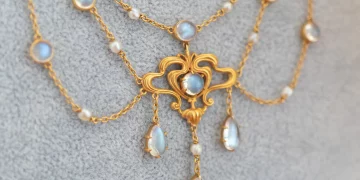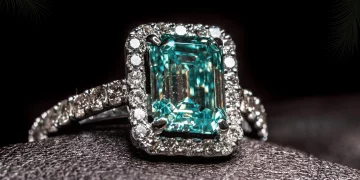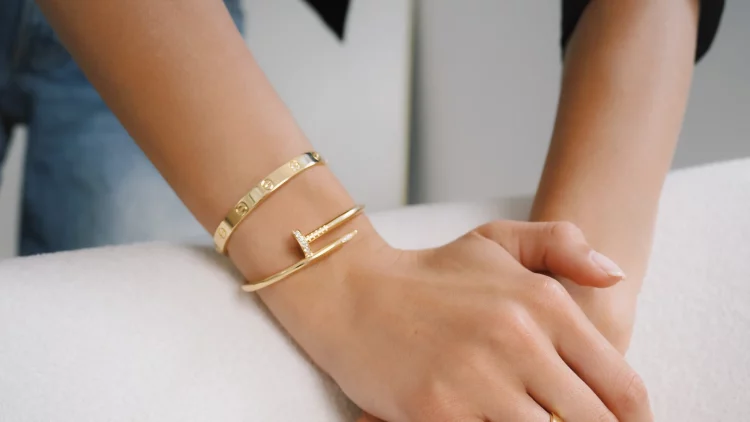When it comes to luxury jewelry, few brands are as synonymous with timeless elegance, exceptional craftsmanship, and exclusive opulence as Cartier. The French jewelry house, founded in 1847 by Louis-François Cartier, has spent more than 170 years crafting exquisite pieces that have adorned the necks, wrists, and fingers of royalty, celebrities, and social elites around the world. But what makes Cartier stand out in the crowded world of luxury jewelry? What secrets from its storied history have allowed it to capture the hearts of the world’s most influential figures?
Cartier’s history is one of visionary innovation, refined artistry, and deep connections to royalty and Hollywood glamour. From its humble beginnings to becoming the “jeweler to kings and the king of jewelers,” Cartier’s journey reveals why it remains one of the most beloved luxury jewelry brands in the world.
1. The Early Years: The Birth of Cartier
Cartier was founded in 1847 in Paris by Louis-François Cartier, but it wasn’t until his son, Alfred Cartier, took over in 1874 that the brand began to take on the prestigious, royal associations it would later become famous for. The brand initially started as a small workshop crafting bespoke jewelry for local Parisians. However, it soon became clear that Cartier’s work was a cut above the rest. Its commitment to high-quality materials, exceptional craftsmanship, and attention to detail quickly attracted the attention of the French aristocracy and royalty.
But what set Cartier apart from other jewelers of the time was Louis-François’s sense of innovation. He wasn’t content with simply following established trends; instead, he sought to create jewelry that was unique, artistic, and avant-garde for its time. As early as the 1870s, Cartier began experimenting with new techniques and designs, breaking away from the traditional jewelry styles of the era. His bold use of color, intricate engravings, and distinctive motifs such as animal-inspired designs and oriental influences would become hallmarks of Cartier’s signature style.
2. The Royal Connection: Cartier’s Rise to Global Prestige
One of the key turning points in Cartier’s history was its close connection to European royalty. In the late 19th and early 20th centuries, Cartier’s pieces became highly coveted among the royal families of Europe. This was not just due to the beauty and craftsmanship of Cartier’s creations, but also because of its ability to create truly bespoke jewelry for its royal clientele.
2.1 Cartier and King Edward VII of England
The relationship between Cartier and the British royal family is one of the most famous in the brand’s history. In 1902, King Edward VII of England, affectionately known as the “Prince of Wales,” bestowed Cartier with the title of “Jeweler to the King.” This royal appointment marked the beginning of Cartier’s global reputation as a brand of unparalleled prestige.
King Edward VII’s patronage was not merely ceremonial; he was an avid collector of Cartier’s exquisite pieces, and his taste influenced Cartier’s designs significantly. As a result, Cartier began to attract the attention of royalty across Europe, from Russian tsars to French aristocrats, and soon became the go-to jeweler for royal commissions.
2.2 The Russian Imperial Family and the Fabergé Rivalry
In addition to the British royal family, Cartier also caught the eye of the Russian royal family, most notably the Romanovs. Tsar Nicholas II and his family were patrons of Cartier, commissioning various pieces over the years, including exquisite tiaras, necklaces, and watches. In fact, Cartier and Fabergé—the famous Russian jeweler—became competitors in a bid to create the most extravagant and luxurious jewelry for the Russian elite.
Cartier’s ability to blend traditional European styles with exotic and oriental influences made its pieces distinct from those of its competitors, and it became known for pushing the boundaries of design and craftsmanship. The brand’s signature style, which embraced bold colors, intricate metalwork, and the use of rare gemstones, ensured that Cartier’s jewelry would remain coveted by the royal families of Europe and beyond.
3. Hollywood and the Rise of Cartier in the 20th Century
While Cartier’s connection to royalty helped cement its place as a prestigious jewelry house, it was the Hollywood glamour of the early-to-mid 20th century that truly helped the brand capture the hearts of the global elite.
3.1 The Cartier Love Affair with Celebrities
Cartier’s Hollywood legacy began in the 1920s and 1930s when the brand became synonymous with glamour and sophistication. Actresses like Greta Garbo, Elizabeth Taylor, and Grace Kelly were seen wearing Cartier pieces on and off the screen. Their association with the brand helped elevate Cartier to new levels of fame and desirability.
Perhaps one of the most iconic moments in Cartier’s Hollywood history was when Audrey Hepburn wore Cartier jewelry in the famous opening scene of the 1961 film, “Breakfast at Tiffany’s”. The image of Hepburn standing in front of Tiffany & Co.’s flagship store, wearing a stunning tiara and a simple black dress, became an iconic representation of luxury and refinement.
The portrayal of Tiffany & Co. as the epitome of luxury and elegance in “Breakfast at Tiffany’s” was not merely fictional. The jewelry worn by Hepburn’s character was real Cartier, which further solidified the brand’s connection to Hollywood glamour. Over the years, other Hollywood icons such as Grace Kelly, Rita Hayworth, and Katherine Hepburn have sported Cartier’s creations, making the brand a constant presence on the red carpet.
3.2 Cartier’s Hollywood Influence: The Creation of Iconic Pieces
Cartier’s influence on Hollywood didn’t stop at its celebrity clients. The brand’s iconic designs also found their way into film sets. The famous Cartier panther motif, for example, became a symbol of grace and fierce elegance. The panther was inspired by a piece of jewelry created by Cartier in the early 20th century for Queen Marie of Romania, and it quickly became one of the brand’s most recognizable designs.
The Panthère collection that followed, featuring sleek, stylized designs with diamond and emerald eyes, became synonymous with feline elegance and power. The panther became more than just a jewelry motif; it was emblematic of the luxurious and untamed spirit that Cartier wanted to convey to its clients, particularly in Hollywood.

4. Cartier’s Design Innovation and Iconic Collections
The success of Cartier isn’t just due to its royal and celebrity connections; the brand is renowned for its innovative designs that have pushed the boundaries of jewelry craftsmanship.
4.1 The Cartier Tank Watch: A Revolutionary Design
One of Cartier’s most famous contributions to the world of luxury is the Cartier Tank watch, introduced in 1917. Designed by Louis Cartier, the Tank was a revolutionary watch that broke from the traditional round designs of the time. Inspired by the shape of a military tank, the rectangular design was modern, sleek, and unique—unlike any other watch on the market.
Over the years, the Tank watch has become an icon of luxury and elegance, worn by famous figures such as Princess Diana, Jackie Kennedy, and Andy Warhol. The watch’s simple yet sophisticated design has made it a symbol of refinement and exclusivity.
4.2 The Cartier Love Bracelet: A Symbol of Commitment
Another standout innovation from Cartier is the Cartier Love Bracelet, which was created in 1969 by Aldo Cipullo, a designer at Cartier. The bracelet is designed to be locked with a tiny screw, symbolizing the idea of permanent commitment—it cannot be removed without the use of a special screwdriver. The bracelet, originally sold exclusively to couples, has since become a symbol of love and commitment in the world of luxury fashion.
This iconic piece was quickly adopted by celebrities, royalty, and socialites, further cementing Cartier’s position as the jeweler of choice for the world’s elite. The Love Bracelet has become an enduring symbol of romance and exclusivity, resonating with couples who want to celebrate their bond with a piece of timeless luxury.
5. Cartier Today: A Continuing Legacy of Luxury
Despite its deep historical roots, Cartier remains at the forefront of the luxury jewelry industry. With boutiques in major cities across the globe, Cartier continues to produce bespoke collections, iconic timepieces, and exceptional jewelry that embody the same craftsmanship, innovation, and elegance that the brand is known for.
Cartier has also maintained its connections to the world of royalty and Hollywood stars. Today, celebrities such as Lady Gaga, Kate Middleton, and Beyoncé are seen wearing Cartier’s exquisite creations, and the brand continues to be a fixture at the Met Gala, Oscars, and other major global events.
Conclusion: The Enduring Allure of Cartier
The legacy of Cartier is built on a combination of craftsmanship, creativity, and exclusivity. The brand’s history is marked by close relationships with royalty, celebrities, and social elites, which helped cement its reputation as the “jeweler to kings and queens.” With its impeccable craftsmanship and bold, innovative designs, Cartier has proven itself as one of the most respected and sought-after luxury brands in the world.
As it continues to evolve and innovate, Cartier remains a symbol of luxury—a reflection of refinement, timeless beauty, and unparalleled elegance. Whether worn by royalty, celebrities, or the elite, Cartier pieces continue to represent the very pinnacle of luxury and sophistication.

















































